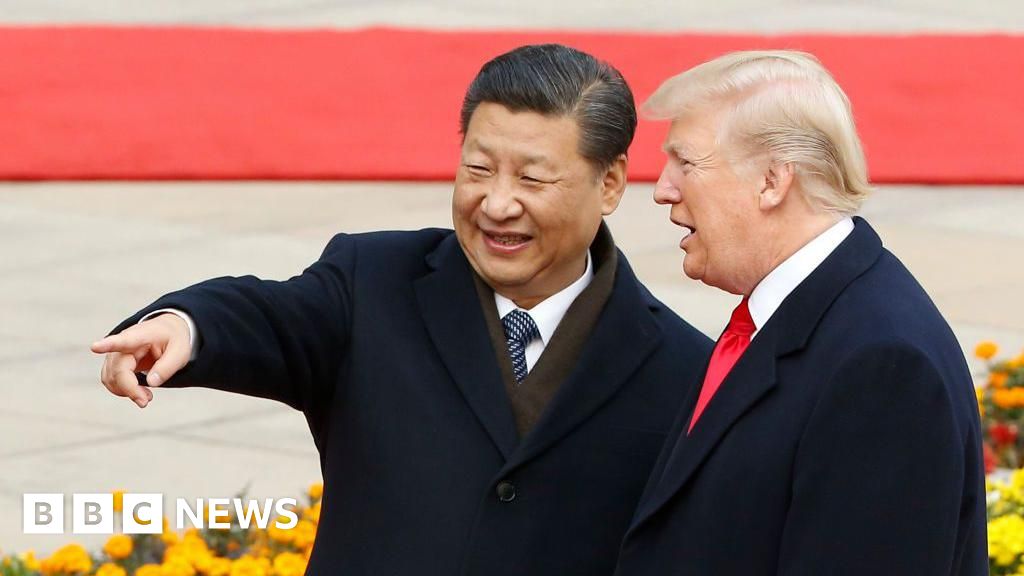Listen to and follow the ‘BoF Podcast’: Apple Podcasts | Spotify | Overcast
Background:
We’ve just returned from what was undoubtedly the biggest fashion month ever, a high-stakes season that saw new creative directors debut their…

Listen to and follow the ‘BoF Podcast’: Apple Podcasts | Spotify | Overcast
We’ve just returned from what was undoubtedly the biggest fashion month ever, a high-stakes season that saw new creative directors debut their…

Using data from the RadioAstron satellite, astronomers have produced a radio image of two supermassive black holes at the center of the distant quasar OJ 287, where the secondary black hole is in a 12-year orbit around the primary.
This…

Phoebe Robinson could see the potential appeal of being with a 72-year-old man. Not really, but kind of.
It was a casual semi-joke she made to a friend months ago when her schedule was chaotic between traveling, moving to a new apartment, writing…

A fleet of sentinel spacecraft, including one with a huge solar sail, could watch out for sneaky “space tornadoes” posing a threat to Earth during solar storms, a new study suggests.
The proposal says that four deep-space spacecraft, collectively…

Macroeconomic factors could also support EM stocks. The US Fed is forecast to cut rates further, creating room for further monetary easing and stronger growth across a number of emerging markets, Trivedi writes.
And the US dollar “will likely stay on the back foot” relative to emerging markets currencies amid a softening US labor market and a potential increase in investment flows into EM stocks and bonds as investors diversify away from the dollar. A weakening dollar can boost flows into EM stocks as investors look for higher returns outside the US.
Which Stock Markets Are Forecast to Grow?
Within Asian markets, Goldman Sachs Research sees investment opportunities in Chinese and Korean equities.
In Korea, 70% of stocks trade below book value (the implied value of a stock based on the company’s assets minus its liabilities). Ongoing reforms to the way companies are governed in Korea could also drive up the country’s equity prices, as could Chinese efforts to address disorderly price cutting and excessive competition among producers.
Meanwhile, Saudi Arabian equities could benefit from the potential easing of limits on foreign ownership of listed companies, which Goldman Sachs Research estimates could unlock passive inflows up to $10 billion to the Saudi markets.
“On balance, this should be supportive of Saudi equities—which have lagged EM in the year to date—and fits with our regional diversification theme,” Trivedi writes.
On the other hand, Indian equities have lagged other emerging markets this year. High valuations, higher-than-expected tariffs, and challenges for the software sector from the increased price of US H1B visas suggest that a broad recovery might not be imminent.
Beyond Asia, the team anticipates continued gains from South African stocks as rising gold prices help mining companies and inexpensive domestic sectors could benefit from a potential growth recovery and lower borrowing costs.
Why are emerging currencies strengthening against the US dollar?
Emerging market currencies outperformed their peers from major developed economies in September, and Goldman Sachs Research anticipates that this outperformance could continue.
There are three key factors supporting the appreciation of EM currencies relative to their DM peers. Firstly, high levels of carry (when investors borrow currency in a country with lower interest rates in order to invest somewhere with higher rates) are contributing to the attractiveness of emerging markets currencies relative to other major currencies.
Secondly, the team notes that the US dollar has been acting more like a cyclical currency lately—one which appreciates as the economy grows and declines when the economy is under pressure—particularly when a shock emanates from the US.
As a result, EM currencies are likely to weaken less significantly against the dollar in the event of changes to risk sentiment or downward revisions to growth expectations in the US.
And finally, the strong performance of EM equities is also likely to have played a role in the appreciation of EM currencies relative to their developed market peers.
The team has found that there is a relationship between the performance of EM currencies and relative equity returns. In short, “the best environment for EM foreign exchange is when both the MSCI EM and S&P indices are going up and MSCI EM is outperforming,” Trivedi writes.
This article is being provided for educational purposes only. The information contained in this article does not constitute a recommendation from any Goldman Sachs entity to the recipient, and Goldman Sachs is not providing any financial, economic, legal, investment, accounting, or tax advice through this article or to its recipient. Neither Goldman Sachs nor any of its affiliates makes any representation or warranty, express or implied, as to the accuracy or completeness of the statements or any information contained in this article and any liability therefore (including in respect of direct, indirect, or consequential loss or damage) is expressly disclaimed.

President Donald Trump has threatened to pull out of an expected meeting with President Xi Jinping of China after Beijing tightened its rules for exports of rare earths.
In a post on social media, Trump said he now saw “no reason” to meet with President Xi later this month, accusing China of “becoming very hostile” and trying to hold the world “captive”.
He also threatened a “massive” increase in tariffs on Chinese goods, raising fears about further escalation of trade tensions between the two economic giants.
Financial markets dropped in the wake of the remarks, with the S&P 500 down 1.8% in mid-afternoon trade in New York.
The last time Beijing tightened export controls – after Trump raised tariffs on Chinese goods early this year – there was an outcry from many US firms reliant on the materials . Carmaker Ford even had to temporarily pause production.
In addition to tightening rules for rare earth exports, China has opened a monopoly investigation into the US tech firm Qualcomm that could stall its acquisition of another chipmaker.
Although Qualcomm is based in the US, a significant portion of its business is concentrated in China.
Beijing has also said it will charge new port fees to ships with ties to the US, including those owned or operated by US firms.
“Some very strange things are happening in China!” Trump wrote in a post on social media on Friday. “They are becoming very hostile.”
The US and China have been in a fragile trade détente since May, when the two sides agreed to drop triple-digit tariffs on each others’ goods that had nearly stopped trade between the two countries.
Officials have held a series of talks since then on matters including TikTok, agricultural purchases, and the trade of advanced technology like semiconductors and rare earths supplied by China, which are key components in cars, smartphones and many other items.
The two sides were expected to meet again this month at a summit in South Korea.
China expert Jonathan Czin, a fellow at the Brookings Institution, said Xi’s recent actions were a bid to shape the upcoming talks, noting that the recent rare earths directive does not go into effect immediately.
“He’s looking for ways to seize the initiative,” he said. “The Trump administration is having to play a game of whack-a-mole and deal with these issues as they come up.”
He added that he did not think China was worried about US retaliation in response.
“What China took away from the Liberation Day tariffs and the cycle of escalation followed by de-escalation is that the Chinese side had a higher pain threshold,” he said. “From their perspective, the Trump administration blinked.”
In prior rounds of trade talks, China has pushed for looser US restrictions on semiconductors. It is also interested in securing more stable tariff policies that would make it easier for its businesses to sell into the US.
Xi has previously used as leverage his country’s dominance of production of rare earths, critical minerals and other materials.
But the export rules unveiled this week target overseas defence manufacturers, making them particularly serious, said Gracelin Baskaran, director of the critical minerals security program at Washington-based Center for Strategic and International Studies.
“Nothing makes America move like targeting our defence industry,” she said. “The US is going to have to negotiate because we have limited options, and in an era of rising geopolitical tension and potential conflict, we need to build our industrial defence base.”
While a Trump-Xi meeting now looks unlikely, she said it was not necessarily completely off the table. Ms Baskaran said there’s still time and room for talks. China’s new rules don’t take effect until December.
“Negotiations are likely imminent,” she said. “Who does them and where they happen will be determined with time.”

September delivered several developments in renal cell carcinoma (RCC). Highlights included real-world findings on belzutifan (Welireg)–related adverse effects across tumor types, insights from the phase 1 STELLAR-002 trial (NCT05176483)…

Aruna, the first African ever to reach the quarter-finals of the Olympic Games in table tennis, is also the second most decorated player in the history of the ITTF-Africa Championships—behind Egypt’s Omar Assar, who will be chasing his fifth…

Netflix is expanding its video game offerings from mobile into TV by launching party games that its subscribers can play on smart TVs.
While Netflix has been offering games for a while, those games were only available on mobile.
In the initial…

Interobserver agreement is moderate among radiologists when classifying uterine fibroids on MRI, according to research published October 10 in Fertility and Sterility.
A team led by Cibele Luna, MD, from the University of Miami in Florida, found…